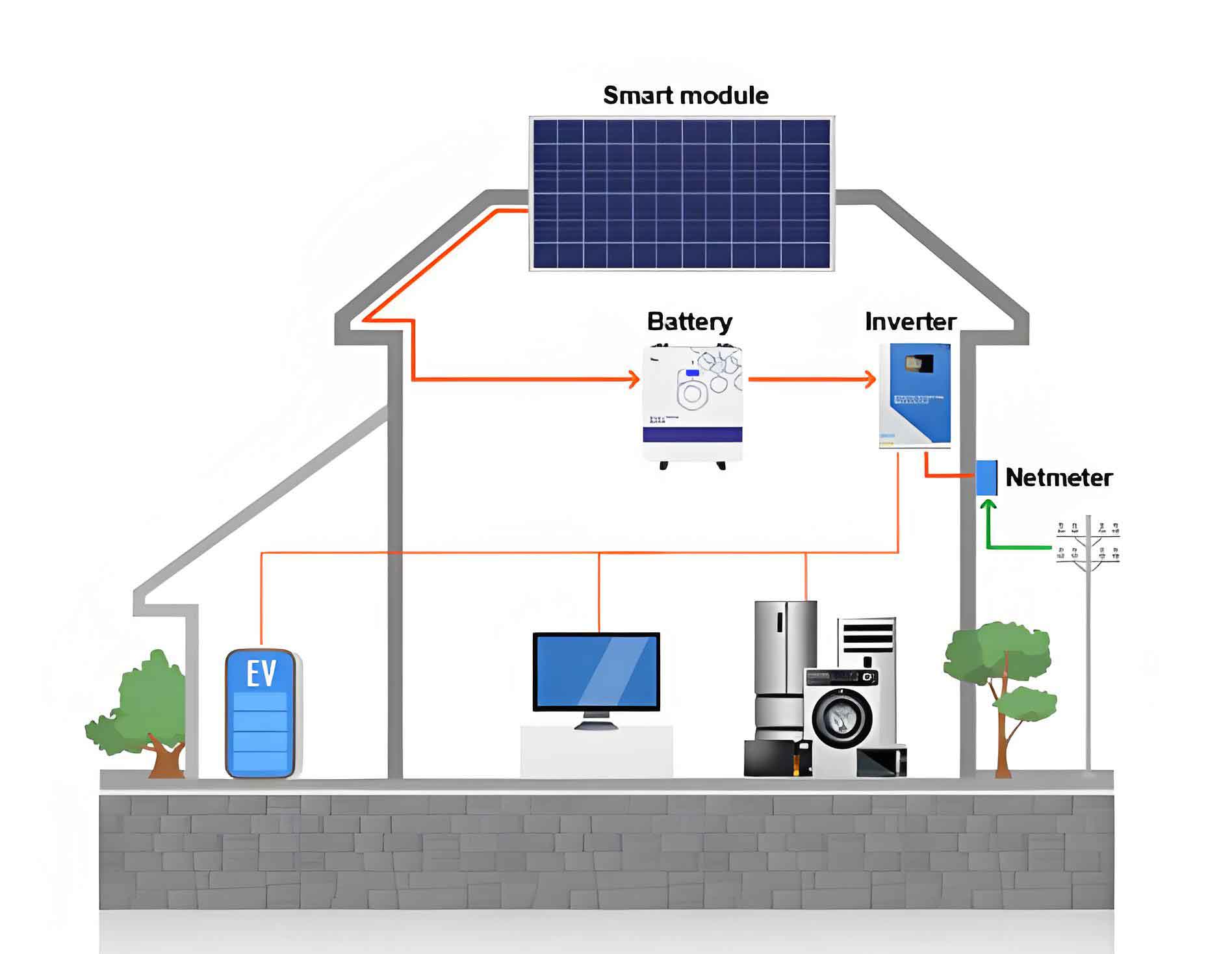
Introduction
In the realm of renewable energy, solar power has emerged as a critical component in the pursuit of sustainable and environmentally friendly energy solutions. A key element in the effective utilization of solar energy is the solar power inverter. The solar power inverter is essential in converting the direct current (DC) generated by solar panels into alternating current (AC), which can be used by household appliances and fed into the power grid. With the advancement of smart grid technology, the role of the solar power inverter has expanded, making it a pivotal player in the seamless integration of solar energy into the smart grid.
The Function of Solar Power Inverter
The primary function of a solar power inverter is to convert the DC electricity generated by solar panels into AC electricity. This conversion is crucial because most electrical devices and the power grid operate on AC electricity. There are several types of solar power inverter, each with distinct features and applications. These include:
- String Inverters: These are the most common type, connecting a series of solar panels (a string) to a single solar power inverter.
- Microinverters: These are small inverters installed on each solar panel, allowing for independent operation and optimization of each panel.
- Central Inverters: Used for large-scale solar installations, solar power inverters connect multiple strings of solar panels to a single, larger inverter.
- Hybrid Inverters: These inverters combine the functionalities of solar and battery inverters, enabling both solar energy conversion and battery storage.
Solar Power Inverter and Smart Grid Integration
Smart grids represent the future of electricity distribution, characterized by their ability to manage electricity demand in a sustainable, reliable, and economic manner. The integration of solar power inverters into smart grids is essential for several reasons:
- Enhanced Energy Management: Solar power inverter facilitate real-time energy management by converting and distributing solar energy as needed. This capability allows for the efficient balancing of supply and demand within the grid.
- Grid Stability and Reliability: Advanced solar power inverter can provide grid support functions such as voltage regulation, frequency regulation, and reactive power support. These features enhance the stability and reliability of the smart grid.
- Data Communication and Monitoring: Modern solar power inverter is equipped with communication capabilities that allow for remote monitoring and data transmission. This functionality is crucial for the smart grid, enabling operators to monitor performance, detect faults, and optimize energy distribution.
- Integration with Energy Storage Systems: Hybrid solar power inverter facilitate the integration of solar energy with battery storage systems. This integration is vital for the smart grid, as it allows for the storage of excess solar energy and its use during periods of high demand or low solar production.
Key Features of Solar Power Inverter for Smart Grid Integration
The evolution of solar power inverter to meet the needs of smart grids has led to the development of several key features:
| Feature | Description |
|---|---|
| Grid Support Functions | Includes voltage regulation, frequency regulation, and reactive power support. |
| Communication Protocols | Supports various communication standards for seamless integration with smart grid infrastructure. |
| Efficiency Optimization | Advanced algorithms to maximize energy conversion efficiency and minimize losses. |
| Remote Monitoring | Allows for real-time performance monitoring and diagnostics via internet connectivity. |
| Energy Storage Integration | Enables the combination of solar power with battery storage systems for enhanced energy management. |
Benefits of Solar Power Inverter in Smart Grid Integration
The integration of solar power inverter into smart grids offers numerous benefits, including:
- Improved Energy Efficiency: Solar power inverter ensure that the maximum amount of solar energy is converted and used effectively, reducing waste and improving overall energy efficiency.
- Enhanced Grid Stability: By providing grid support functions, solar power inverter help maintain the stability and reliability of the power grid.
- Reduced Carbon Footprint: The efficient use of solar energy reduces reliance on fossil fuels, thereby decreasing greenhouse gas emissions and contributing to a lower carbon footprint.
- Cost Savings: Homeowners and businesses can save on electricity costs by utilizing solar energy and participating in net metering programs where excess energy is fed back into the grid.
Challenges and Future Prospects
While the role of solar power inverter in smart grid integration is promising, several challenges need to be addressed:
- Technical Complexity: The advanced functionalities of modern solar power inverter require sophisticated technology and expertise for installation and maintenance.
- Cost: High-quality solar power inverter with advanced features can be expensive, potentially posing a barrier to widespread adoption.
- Standardization: The lack of standardized communication protocols and grid support functions can hinder the seamless integration of solar power inverter with different smart grid infrastructures.
Despite these challenges, the future of solar power inverter in smart grid integration looks bright. Technological advancements, increased affordability, and supportive regulatory frameworks are expected to drive the widespread adoption of solar power inverter, further enhancing the efficiency and sustainability of smart grids.
Conclusion
The solar power inverter plays a crucial role in the integration of solar energy into smart grids, facilitating enhanced energy management, grid stability, and efficient utilization of renewable energy. As smart grid technology continues to evolve, the solar power inverter will remain a key component in the quest for a sustainable and resilient energy future. By addressing the current challenges and leveraging the benefits of solar power inverter, we can move closer to achieving a cleaner, greener, and more reliable energy system.
